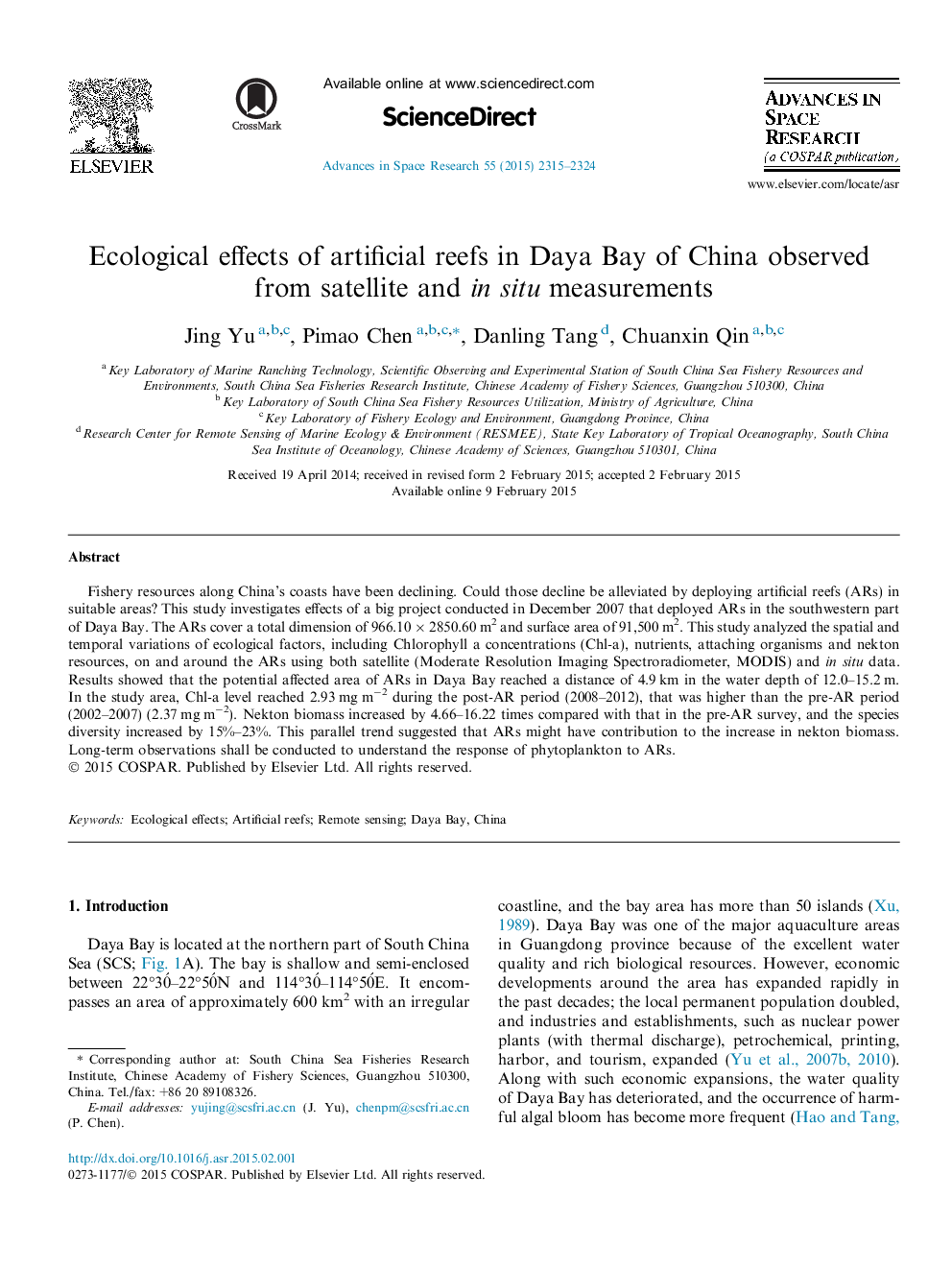| Article ID | Journal | Published Year | Pages | File Type |
|---|---|---|---|---|
| 1763923 | Advances in Space Research | 2015 | 10 Pages |
Fishery resources along China’s coasts have been declining. Could those decline be alleviated by deploying artificial reefs (ARs) in suitable areas? This study investigates effects of a big project conducted in December 2007 that deployed ARs in the southwestern part of Daya Bay. The ARs cover a total dimension of 966.10 × 2850.60 m2 and surface area of 91,500 m2. This study analyzed the spatial and temporal variations of ecological factors, including Chlorophyll a concentrations (Chl-a), nutrients, attaching organisms and nekton resources, on and around the ARs using both satellite (Moderate Resolution Imaging Spectroradiometer, MODIS) and in situ data. Results showed that the potential affected area of ARs in Daya Bay reached a distance of 4.9 km in the water depth of 12.0–15.2 m. In the study area, Chl-a level reached 2.93 mg m−2 during the post-AR period (2008–2012), that was higher than the pre-AR period (2002–2007) (2.37 mg m−2). Nekton biomass increased by 4.66–16.22 times compared with that in the pre-AR survey, and the species diversity increased by 15%–23%. This parallel trend suggested that ARs might have contribution to the increase in nekton biomass. Long-term observations shall be conducted to understand the response of phytoplankton to ARs.
